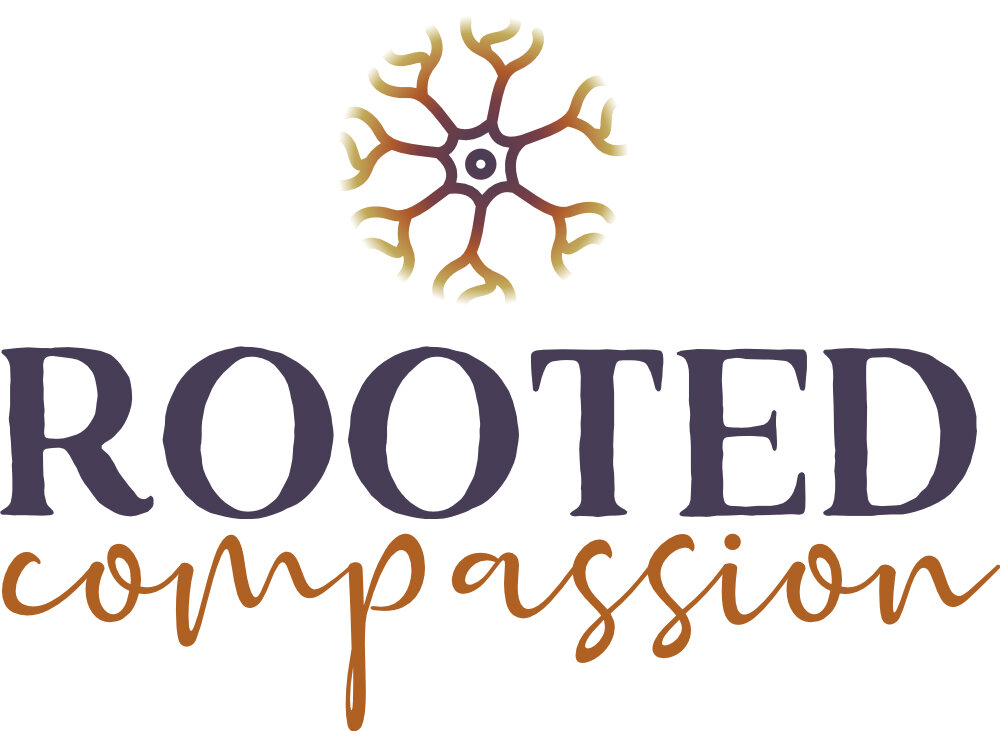The Polyvagal and “Everything” Series: Part II, The Beginning
A few blogs ago, I said I was starting a series explaining the PVT through story. I am editing that a bit and am changing this to The Polyvagal Theory and (insert topic here). I’ll share the graphic I created after years of studying this theory with Dr. Stephen Porges and Deb Dana. The blog will be a place where I share stories to help explain how this new theory impacts understanding of nervous system functioning and what it looks like in everyday life. A lot of what I share here today is a repeat of my last blog. I do this because it is important and worth the review!
To review, the Polyvagal Theory tells us that we have three primary nervous system states and these three states have a variety of expressions which are unique to each individual.
These three states are:
Social connection – seeking to be in contact and safe with others (labeled A in the map below)
Mobilization – think flee or fight (labeled B in the map below)
Immobilization – think some level of shut down (labeled C in the map below)
We experience these three states when we are feeling both emotionally safe and emotionally unsafe. This blog will focus on safe experiences in our nervous system.
You know that feeling you get when you first meet somebody and think, “This is my new best friend!” That sensation is information your autonomic nervous system (ANS) is giving you to let you know this person feels safe, emotionally. Sometimes we call this first impression, sixth sense or perception. We know now, through the work of Dr. Porges, that this sense is a result of our vagus nerve and ANS. Neuroception is the term Dr. Porges coined to describe this experience. Our neural systems (nervous system) reads our environment and the people in it to assess for safety or danger, both physically AND emotionally. This happens continuously and unconsciously. Why do some people seem to have more of this than others? They pay attention to body sensations. Today we will talk about what happens on the “safe” (or calm, peaceful, relaxed) part of the map.
Here is half of the map I created to represent our safe experiences:
In the section labeled A, we note the experiences we have when we are around people with whom we feel safe. Remember a time when you felt connected to the person/people you were with. What are you thinking, feeling, saying? Where do you feel it in your body? Where are you? Who is with you?
In the section labeled B, we note the experiences we have when we feel energetic. Remember a time when you felt productive, playful and creative. Again, consider what you see yourself doing in this situation. What are you thinking, feeling, saying? Where do you feel it in your body? Where are you? Who is with you?
In the section labeled C, we note the experiences we have when we feel stillness. Remember a time when you felt calm or peaceful in the quiet. Again, consider what you see yourself doing in this situation. What are you thinking, feeling, saying? Where do you feel it in your body? Where are you? Who is with you?
When we neurocept safety, these things happen:
We feel peaceful and connected to others, self-and/or the greater world.
When we feel the desire to move and play, we may also feel organized, creative and enthusiastic.
Sometimes we feel secure and the desire to be still or reflective.
It is important to note that these responses happen in less than a second and usually go unnoticed. This is because they happen in the brain stem which is where all functions of the body happen without awareness.
Our work with the Polyvagal Theory is to bring these reactions into conscious awareness so we can work with our nervous system reactions and our bodies desire to connect and survive with more ease.
Hopefully, during this read you have experienced some peace and calm as you remembered and reflected on times you felt safe! We will still offer this picture we hope will uplift you!
Amy Stenger-Sullivan (she/her/hers) is a Licensed Professional Clinical Counselor-Supervisor, trainer and CEO of Rooted Compassion Counseling and Consulting, LLC. As a Certified Trauma Responsive Counselor, Amy understands and applies knowledge of interpersonal neurobiology, Polyvagal Theory and Eye Movement Desensitization and Reprocessing (EMDR). Amy is an EMDR Certified Therapist. She specializes in utilizing and teaching about the nervous system to help people move into post-traumatic healing and growth.
The Rooted Compassion team is made up of a group of counselors who have a variety of specialties in order to best serve our clients. We recognize that every person has his/her own personal and unique life experiences and that one modality will not work for every client. Listed below is a summary of our counselors’ specialties at Rooted Compassion:
Emotional Freedom Techniques
Grief Counseling
Somatic Focused Counseling
EMDR
Cognitive Behavioral Therapy
Dialectical Behavior Therapy
Mindfulness-Based Practices
Trauma Responsive Care Techniques
Acceptance and Commitment Therapy
Drama Therapy/Expressive Arts
If you are interested in learning more about what Rooted Compassion is all about, please contact us today, look through our website, or find us on Instagram and Facebook.
Rooted Compassion Counseling is Ohio’s leading practice for trauma therapy through the lens of the nervous system. Our focus is to walk alongside clients as they heal from depression, anxiety, trauma, grief and/or loss. If you or someone you know are seeking to explore and build an inner sense of calm and safety, please contact us today. We would love to help you to find a counselor and counseling techniques that will guide you on your mental health journey to healing.




